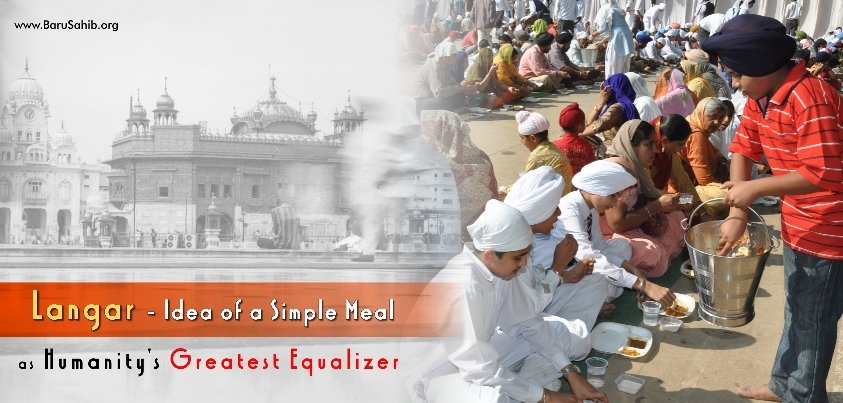I elbow my way past pedestrians, carts and the occasional cow down a narrow road in Amritsar, Punjab. The afternoon sun beats down mercilessly, forcing me to squint. “Maybe it is a bad time to visit” I tell myself. Within minutes however, everything else seems to melt away as my eyes widen to take in […]
I elbow my way past pedestrians, carts and the occasional cow down a narrow road in Amritsar, Punjab. The afternoon sun beats down mercilessly, forcing me to squint. “Maybe it is a bad time to visit” I tell myself.
Within minutes however, everything else seems to melt away as my eyes widen to take in the sheer expanse and grandeur of the structure in front of me. Its minarets and walls glisten with gold and its central dome stands high in majestic glory, sagely surveying the thousands below. Considered the holiest of shrines in the Sikh religion, the Golden Temple is to Sikhs what St. Peter’s Basilica is to Catholics or the Kaaba to Muslims.
I buy a scarf to cover my head. Visitors are expected to cover their heads as a sign of respect. I leave my shoes and collect a token for them at a neatly organised stall, run by volunteers, before washing my feet in a pool of water (again, mandatory) I enter the shrine from one of its four entrances, built to indicate openness to all religions. Inside, the temple complex is massive with a large tank surrounding the temple. Devotees take dips in the holy water, while others mill around the marbled quadrangle with their eyes closed, brows furrowed and palms together, absorbed in their prayers. Despite the crowd, there isn’t the cacophony I had expected, but a revered silence. I am surrounded by European backpackers, newly weds, turbaned Sikh men and families.
One of the tenets of the Sikh religion is the “langar” – A kitchen, where a free meal is served to all visitors every day. This has been the practice since the founding of the Shrine in 1604. Imagine 100,000 people at a sit-down lunch every day! I cynically mutter “Impossible. Got to see this for myself”. Soon, I find myself in a queue approaching the dining hall with a plate and spoon in hand. Volunteers guide the crowd, wash used utensils and keep the place absolutely clean. The hall is lined with hundreds of people seated cross-legged on mats while Sikh men in uniform serve lunch – A simple but tasty vegetarian fare prepared by any visitor who wishes to contribute and serve on that day. My mind tries to calculate the number of rotis (flattened bread) that must be produced for 100,000 people on a daily basis. It is unfathomable.
Having lived and worked in the globalised world where everything must make “logical sense”, I don’t understand why the Sikhs do this. It requires immense planning, costs millions of dollars, no return on investment and… My thoughts are interrupted by a nudge in the ribs. The man sitting next to me, smiles. He is emaciated, wears torn clothes with white plaster stains on his shirt. He asks me where I am from. I tell him. He says I am a long way from home. He is a Hindu and though his family lives far away in another state, he has come to Punjab to make a living as a labourer. “A few more years…” he adds wistfully. In front of me, sits a turbaned gentleman in a business suit, his tie carefully tucked away while he eats. He catches my eye. “First time here?” he enquires in impeccable English. We start talking. He runs several businesses in Canada and visits India every year. “Surely there are Gurudwaras in Toronto?” I ask. “True…. But… It isn’t the same…” he trails off, looking around the hall.
Then it hits me! This is the reason why the Sikhs undertake this immense task – So that people, irrespective of religion, nationality, sex, status, caste or creed may sit down together and partake in a meal. No separate dining areas and no preferential treatment, even if you are the President. Underlying the principles of love and compassion, the founder of Sikhism, Guru Nanak decreed that no person must ever go hungry. Gurudwaras around the world take this seriously. The idea of a simple meal as humanity’s greatest equaliser moves me.
The man next to me wipes his mouth on his shirtsleeve and bids goodbye. He will be back again tomorrow he says. His friends wait for him on the other side of the hall. I wonder if Sikh volunteers at the temple would ever get irritated and consider regulars “freeloaders” My eyes follow the group of labourers as they exit the hall. A sturdy guard at the door flashes them a smile and engages in a quick, familiar chat. My question is answered.
I collect my shoes from an old man who mans the locker facility. I ask him if he works here. “Oh. No” he laughs “I am too old for that! But my wife and I choose to volunteer here 2 days every week” There is pride in his voice. He leans forward “Son, did you eat lunch?”
“Yes”
“Ah. Good” His eyes crinkle in an avuncular smile.
Of course the Golden Temple is a visual treat. Steeped in history, it boasts of beautiful architecture and rare paintings. But it is more than all that. It is not another visit that you merely cross off your travel agenda. It is an experience. It stays with you long after you go back to the world where everything must make economic sense and where there is no such thing as a “free lunch”
JOSHUA KARUNAKARAN
~ Source: thewire.in

